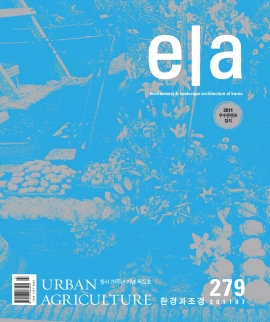Dual Track Urbanism:
An Innovative Concept for Integrative
Urban Development Based on Urban Agriculture
인구가 100만 명이 넘는, 미래 거대 도시가 직면하게 될 일들을 몇 가지 정도로 꼽아본다면 다음과 같다. 부분적으로 통제 불가능하지만 엄청난 면적의 증가, 파편화된 공간, 상당한 인구의 증가, 양극화 현상의 심화, 시민들에 대한 적절한 주택 공급, 온전한 환경 및 생활 수준의 보장,�그리고 기술적 기반 기설의 유지 등이 바로 그것이다. 이뿐만 아니라 심상치 않은 기후 변화로 인해 발생하는 문제들도 적지 않다. 또한 현재 한창 개발이 진행되고 있는 거대 도시들의 개발 과정에는 공지空地가 도시의 지속가능성과 그곳에서 살아갈 시민들의 삶의 질에 장기적으로 이바지할 수 있도록, 도심 지역 내에서 공지가 보존될 수 있게 해줄 탄탄한 토대가 마련되고 있다. 도심 개발 거점 지역을 위한 공지 체계에 대한 토론이 으레 사치스러워 보일 수도 있지만, 이는 순전히 오해에서 비롯된 것이다. 미래 도시의 생활 수준이 어떻게 변모할지는 현재 도시 개발의 역동적 과정에 전적으로 달려있다. 따라서 다음과 같은 의문을 떠올릴 수 있다. 미래 거대 도시에서 공지는 어떤 모습을 갖게 될 것이며, 그 기능은 무엇이 될 것인가? 계획만으로 통제할 수 없을 만큼 빠른 속도로 성장하는 도시에서, 또한 대개의 경우 비공식적인 공간 개발이 그 주요한 특징이 되는 도시에서, 공지는 어떻게 이러한 공간의 필수적인 한 부분으로 자리매김할 것인가? 오늘날 도시 주변 지역에서 농지를 확보하고 배분하는 방법을 살펴본다면, 미래 거대 도시의 공지 체계를 가능 케 해줄 접근 방법을 모색할 수 있을 것이다.
The challenges faced by future mega cities, to list but a few, include considerableand partially uncontrollable-spatial growth, fragmented spaces, substantial population growth, the increasing divide between rich and poor, problems of providing adequate housing, of guaranteeing appropriate environmental and living standards, and of maintaining technical infrastructure, as well as the challenges posed by looming climate change. At the same time, in the current developmental processes of emerging mega cities the foundations are being laid so that open space can be preserved within these urban regions in order to make a long-term contribution to the sustainability of cities and the quality of life in them. Although the discussion about potential open space systems for urban growth centers may seem almost a luxury it would be misleading to see it in this light. The course of how urban standards of living will develop in the future is being set in today’ dynamic process of urban development. This raises the following questions: What will open space in the mega cities of the future look like? What is its function? And how can it become an integral part of cities which are growing at a pace that cannot be controlled through planning-in as far as it exists and which are characterized to a large degree by informal spatial development? Securing and allocating agricultural land in periurban areas today could be a possible approach to future mega-urban open space systems.





